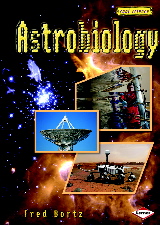When I posted my last science book roundup, few of us knew what was about to come. We had heard about a novel coronavirus and an outbreak of a new disease called COVID-19 in China, but only those well-versed in epidemiology or the history of previous pandemics expected to see so much of the economy shut down as we practice a previously unknown form of interaction called social distancing. Perhaps as a result, I have only heard from a handful of publicists with requests for reviews, and I offer four of them for my readers’ consideration. They have a common thread, namely that they deal with organisms, human, terrestrial, and otherwise.
We will get to those books shortly, but first “a word from our sponsor.” My usual caveat: For my Roundups, I don’t read all of the books in detail, but they are published by reputable publishers and written by credible authors. I browse them enough to recommend who might want to pick them up from a library or bookstore shelf.
My usual request: Because freelance book review opportunities have almost disappeared, I now rely on Amazon referral fees to cover the cost of maintaining my online presence. If you are inclined to buy any of these books from Amazon, please use the links here so I can get a small referral fee. Another way to thank me is to click my portal to Amazon for whatever shopping you plan to do. I get reports of what people buy but not who is buying, so I will not be able to say thanks. But please know that I am grateful.
Did you catch that “otherwise” in the opening paragraph? If you know my science books for young readers, then you probably are aware of my strong interest in planetary science, including  Astrobiology, the science of life on other worlds. Astrobiology takes many forms, but probably the one that generates most interest among general readers is SETI, the Search for Extraterrestrial Intelligence. In a galaxy as vast as our Milky Way, it seems highly unlikely that Earth is the only planet on which intelligent beings, capable of sending signals outside of their world, have evolved. And if that is the case, why have we never detected a signal from any one of them?
Astrobiology, the science of life on other worlds. Astrobiology takes many forms, but probably the one that generates most interest among general readers is SETI, the Search for Extraterrestrial Intelligence. In a galaxy as vast as our Milky Way, it seems highly unlikely that Earth is the only planet on which intelligent beings, capable of sending signals outside of their world, have evolved. And if that is the case, why have we never detected a signal from any one of them?
The short answer seems to be that with hundreds of billions of stars to choose from, we simply have not sampled enough to find any of a handful of needle-in-a-haystack worlds. Perhaps, some SETI researchers suggest, we should deliberately send out a message and see if anyone answers. That is the starting point for British author Keith Cooper in  The Contact Paradox: Challenging Our Assumptions in the Search for Extraterrestrial Intelligence. The back cover describes the book this way: “(T)he act of transmitting raises troubling questions about the process of contact…. Cooper looks at how far SETI has come since its modest beginnings by speaking to the leading names in the field and beyond. SETI forces us to confront our nature in a way that we seldom have before–where did we come from, where are we going, and who are we in the cosmic context of things? The book considers the assumptions that we make in our search for extraterrestrial life, and explains how those assumptions can teach us about ourselves.”
The Contact Paradox: Challenging Our Assumptions in the Search for Extraterrestrial Intelligence. The back cover describes the book this way: “(T)he act of transmitting raises troubling questions about the process of contact…. Cooper looks at how far SETI has come since its modest beginnings by speaking to the leading names in the field and beyond. SETI forces us to confront our nature in a way that we seldom have before–where did we come from, where are we going, and who are we in the cosmic context of things? The book considers the assumptions that we make in our search for extraterrestrial life, and explains how those assumptions can teach us about ourselves.”
Moving from the far reaches of the galaxy to the innermost element of human life, University of Cambridge and Caltech biology and bioengineering professor Magdalena Zernicka-Goetz joins noted British science writer Roger Highfield to explore  The Dance of Life: The New Science of How A Single Cell Becomes a Human Being.
The Dance of Life: The New Science of How A Single Cell Becomes a Human Being.
The publisher describes the book as “A renowned biologist’s cutting-edge and unconventional examination of human reproduction and embryo research.” It also includes an account of Zernicka-Goetz’s own pregnancy, in which a sample test of placental cells showed a possible genetic abnormality. She continued the pregnancy to term and delivered a perfectly healthy baby boy. The experience led her research in a different direction, including an understanding of the ways embryos can, in some cases, repair their own defects, which could revolutionize our understanding of pregnancy and give new promise to in vitro fertilization.
The publicity copy notes the following: “Scientists have long struggled to make pregnancy easier, safer, and more successful. In The Dance of Life, developmental and stem-cell biologist Magdalena Zernicka-Goetz takes us to the front lines of efforts to understand the creation of a human life. She has spent two decades unraveling the mysteries of development, as a simple fertilized egg becomes a complex human being of forty trillion cells. Zernicka-Goetz’s work is both incredibly practical and astonishingly vast: her groundbreaking experiments with mouse, human, and artificial embryo models give hope to how more women can sustain viable pregnancies. Set at the intersection of science’s greatest powers and humanity’s greatest concern, The Dance of Life is a revelatory account of the future of fertility–and life itself.”
In a different look at human evolution, British science writer and broadcaster Gaia Vince goes beyond biology to other forces that drove our development to become the dominant species on Earth. It is not merely evolution, but  Transcendence: How Humans Evolved Through Fire, Language, Beauty, and Time. The dust jacket copy describes what sets this book apart: “Although prevailing theory holds that a recent cognitive revolution transformed humans, Vince argues that we are the product of a unique coevolution of our genes, environment, and culture. Beginning hundreds of thousands of years ago, with four key drivers–fire, language, beauty, and time–it set our species on a new path, unleashing a compounding process that propelled us from the Stone Age to the Space Age and continues to transform us today. Provocative and poetic,… it asks: Now that we have remade our world, what are we doing to ourselves?”
Transcendence: How Humans Evolved Through Fire, Language, Beauty, and Time. The dust jacket copy describes what sets this book apart: “Although prevailing theory holds that a recent cognitive revolution transformed humans, Vince argues that we are the product of a unique coevolution of our genes, environment, and culture. Beginning hundreds of thousands of years ago, with four key drivers–fire, language, beauty, and time–it set our species on a new path, unleashing a compounding process that propelled us from the Stone Age to the Space Age and continues to transform us today. Provocative and poetic,… it asks: Now that we have remade our world, what are we doing to ourselves?”
The final book in our roundup is certainly the most unusual. The paperback original  The Gyroscope of Life: Understanding Balances (and Imbalances) in Nature by David Parrish, an Appalachian naturalist and 50-year practitioner. The back cover notes call it “A love song to the field of biology [that] will stretch the minds of readers–scientists and nonscientists alike.”
The Gyroscope of Life: Understanding Balances (and Imbalances) in Nature by David Parrish, an Appalachian naturalist and 50-year practitioner. The back cover notes call it “A love song to the field of biology [that] will stretch the minds of readers–scientists and nonscientists alike.”
Its main theme is this: “Culturally, we tend to simplify challenging concepts by thinking of them as binary systems: life/death, female/male. But what if these concepts are more complex than mere opposites…. While sharing his personal experiences with religion, science, battling illness, and more, Parrish explores a series of unconventional topics such as a biologists credo, Mother Nature’s House Rules, the foolishness of conflicts between science and religion, ritualistic funerary cannibalism, a biological critique of ‘The Big Bang Theory’ theme song, pseudo-copulation of insects with flowers, and the Faustian bargain that agriculture and plant domestication represent.”
If you think that describes a bit of a hodge-podge, you are probably right. That doesn’t make it a bad book, but you need to be the right kind of reader to enjoy it. The sections I sampled seemed disjointed with interesting tidbits scattered throughout. Are all those diversions necessary? If you are the type of reader who enjoys discovering information that way, then this is a book for you. Just be prepared to be jolted by “too much information” at times, such as the author’s choice to open the chapter called “Male or Female?” by describing himself as “castrate” (for valid medical readers). For me, it seemed to distract rather than inform or serve as a thread to tie up the chapter. You may respond differently, or as some people say, your mileage may vary.
I’ll close with a wish for your good health as we all face a historic pandemic. I can’t predict when I will have another roundup to offer. If I’m lucky, some publicists will return to their offices, read this blog, and decide to offer me science books to share with you in the next few months.
Blogger and reviewer Fred Bortz is the author of numerous science books for young readers.
A request from the blogger:
Please let me know you appreciated this posting by adding a comment or sending an email with your thoughts to [email protected] . Many thanks!
